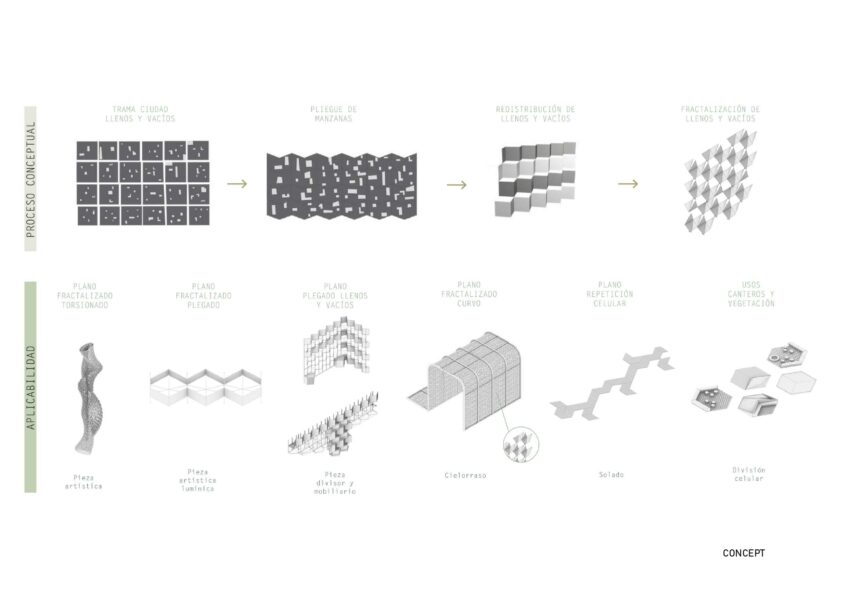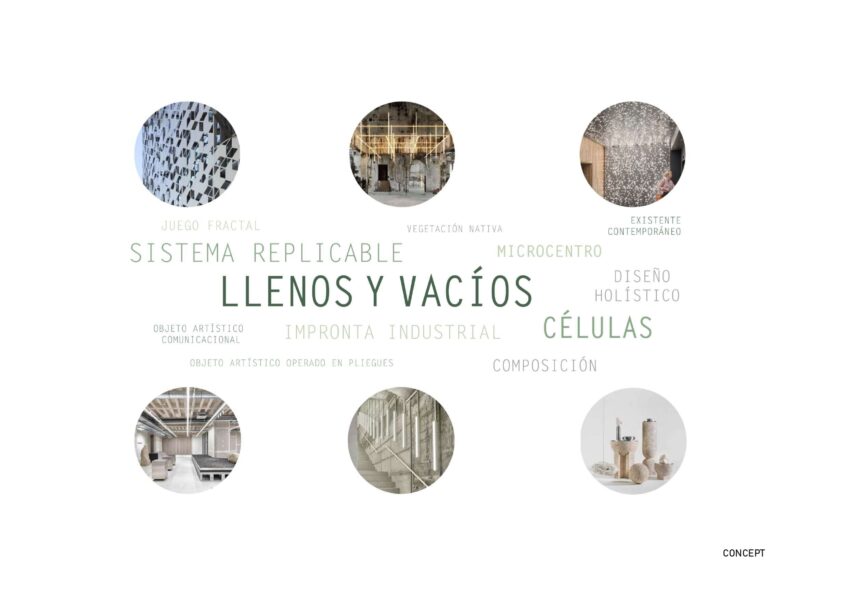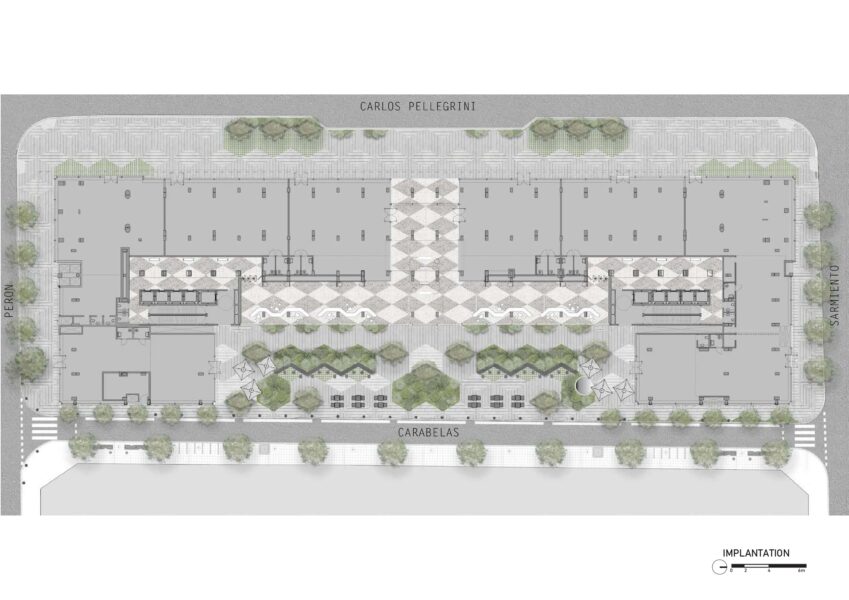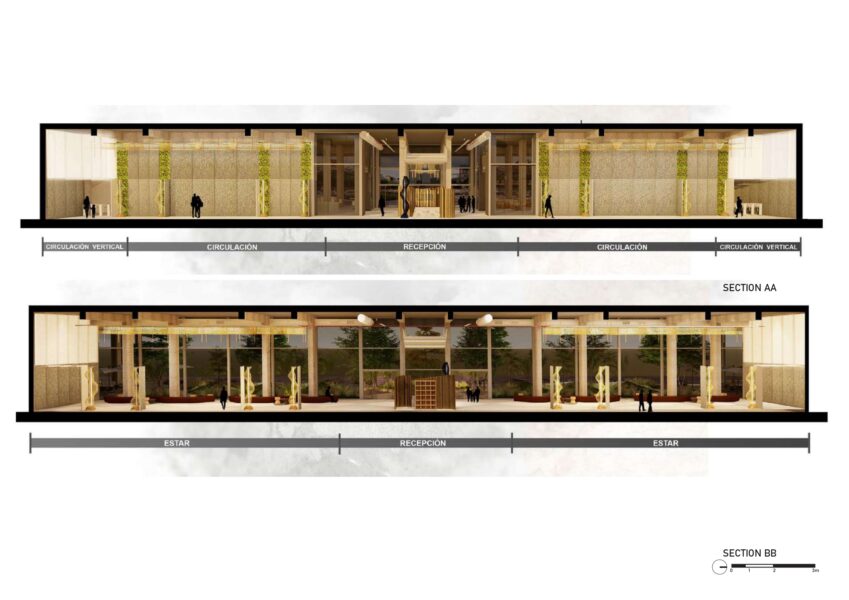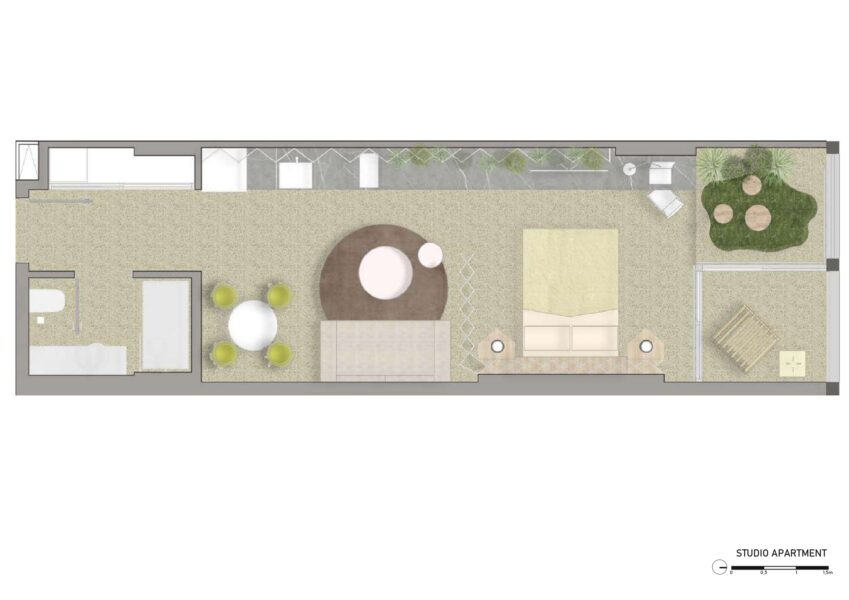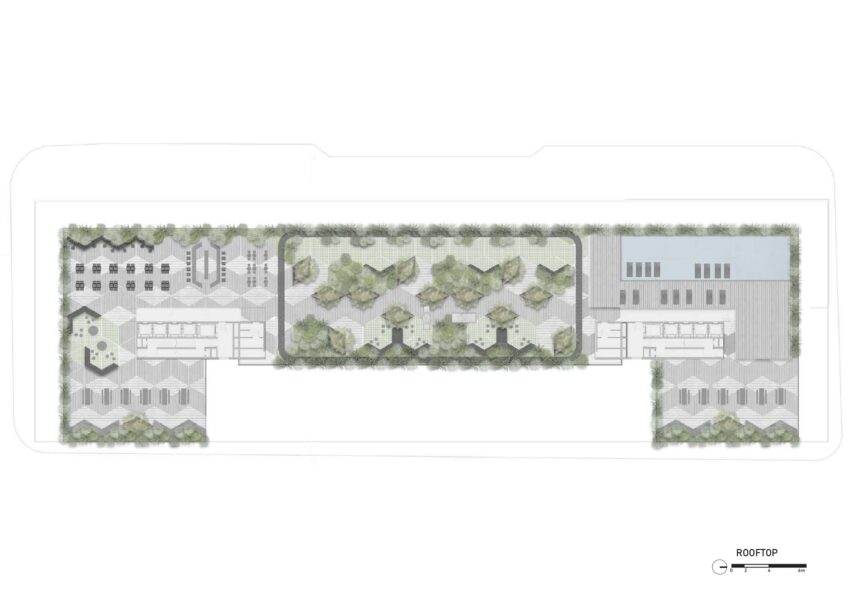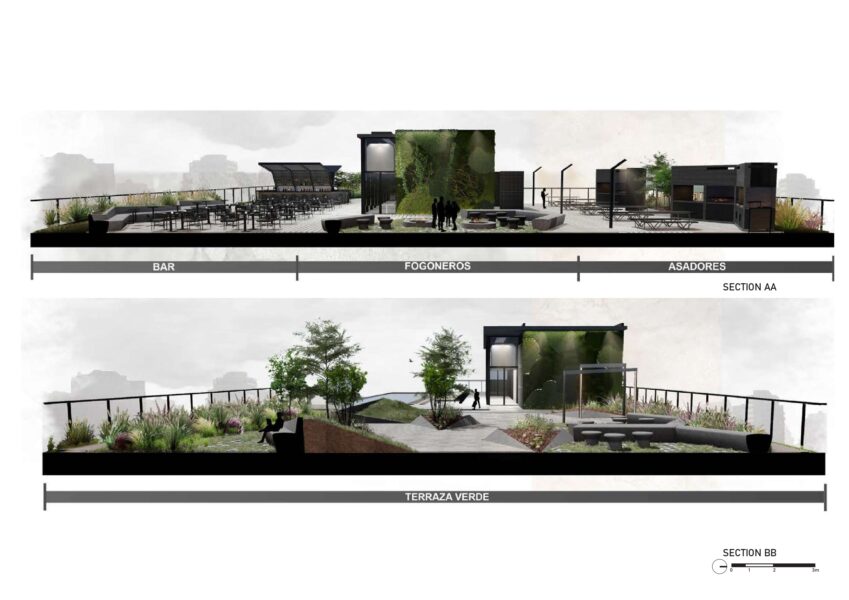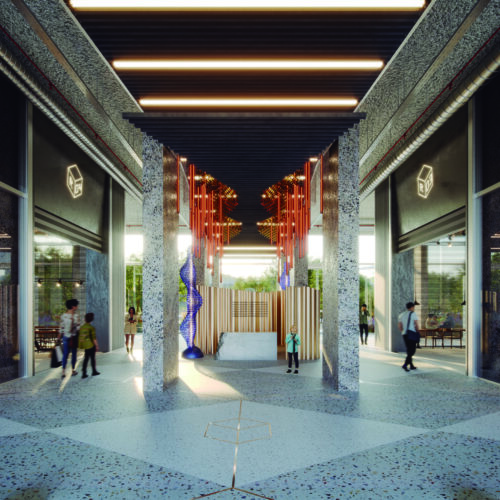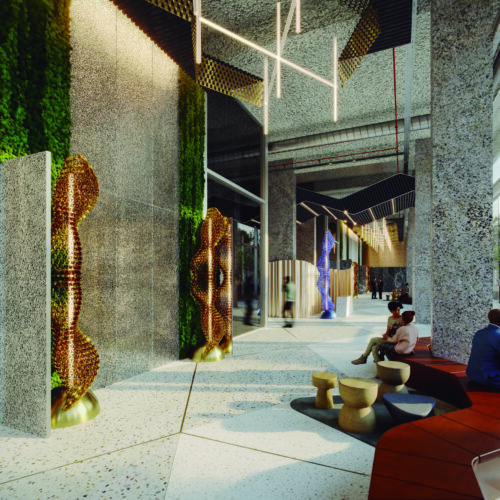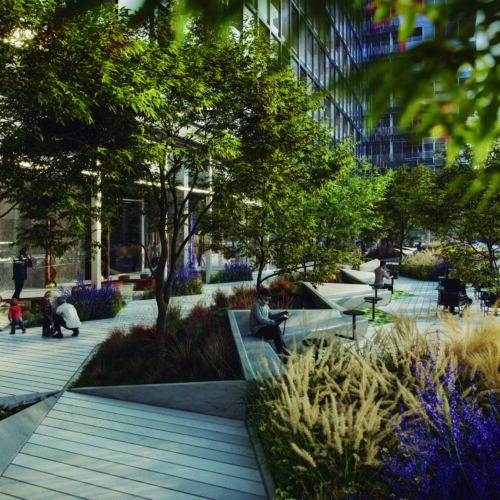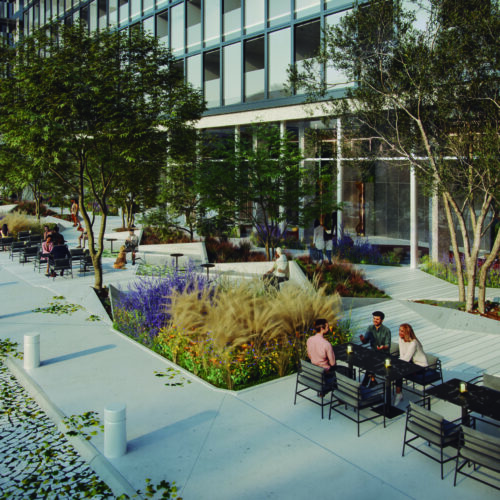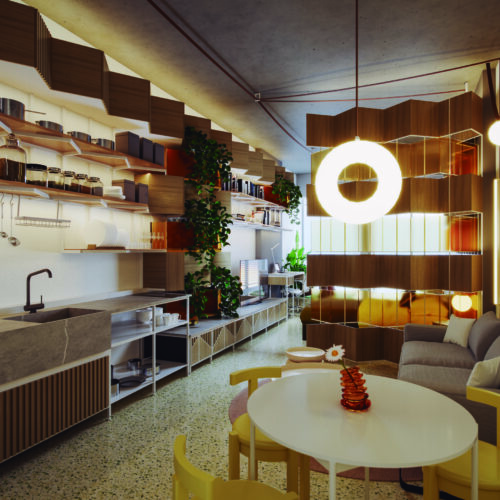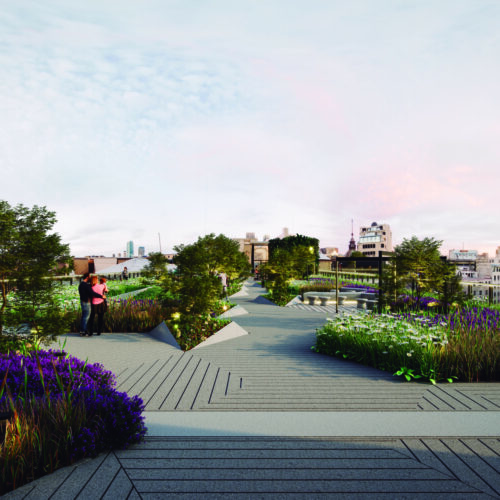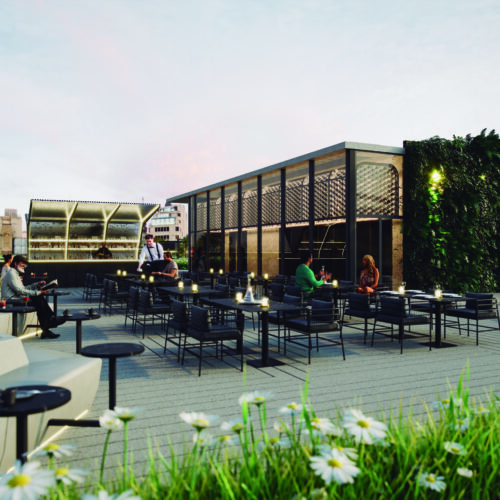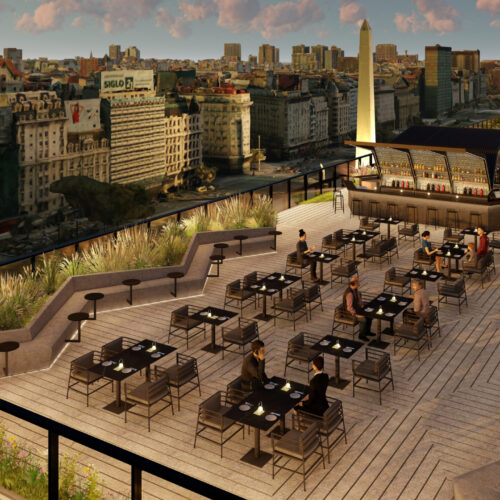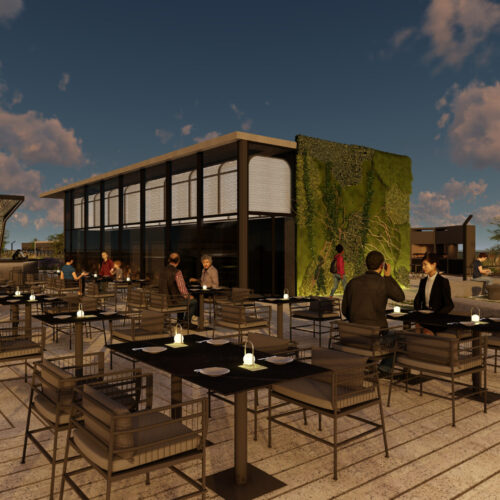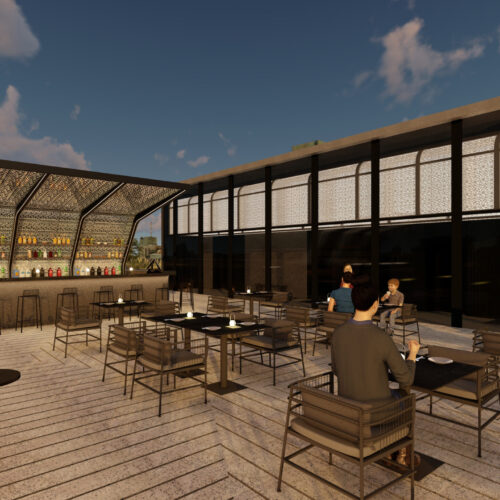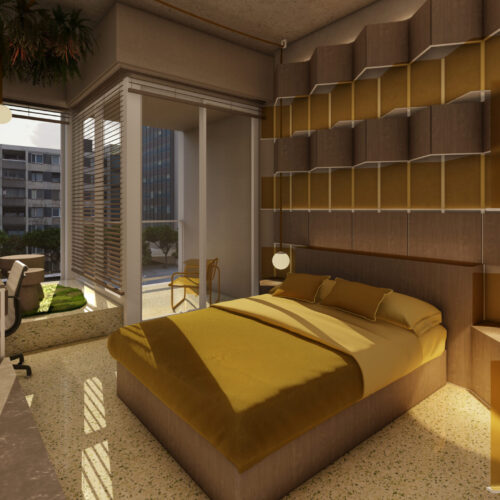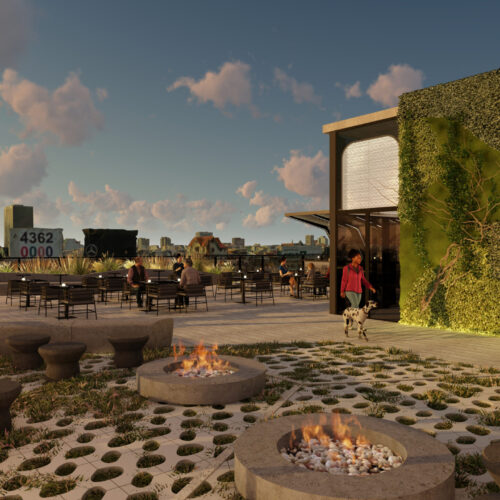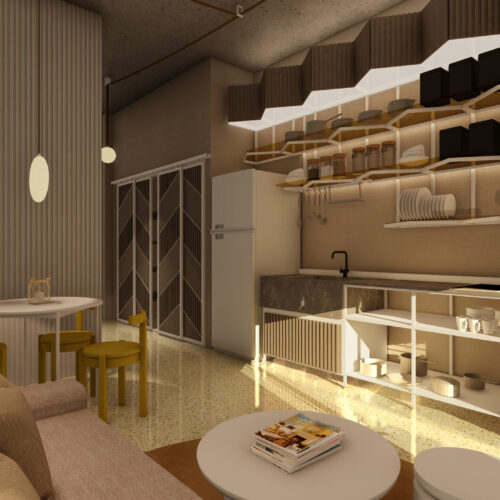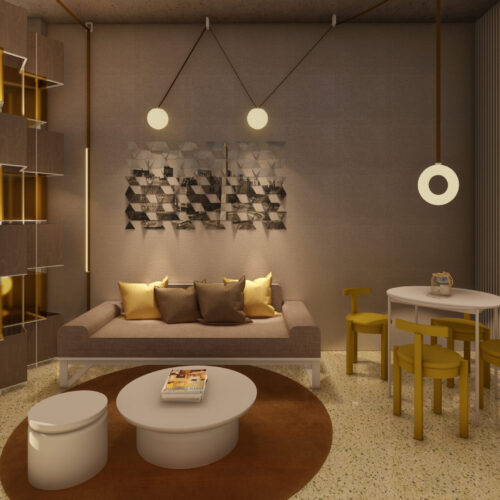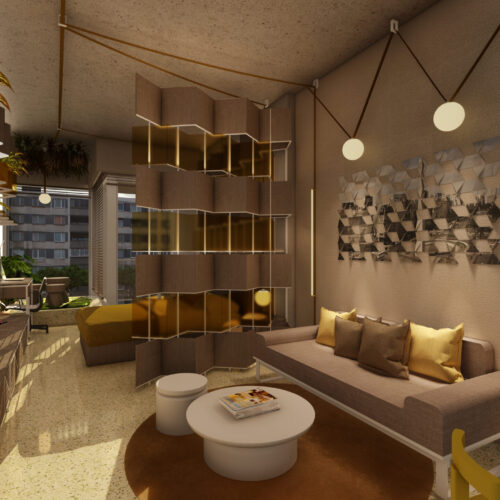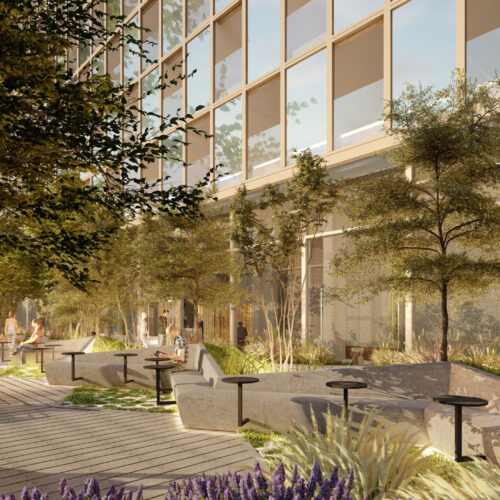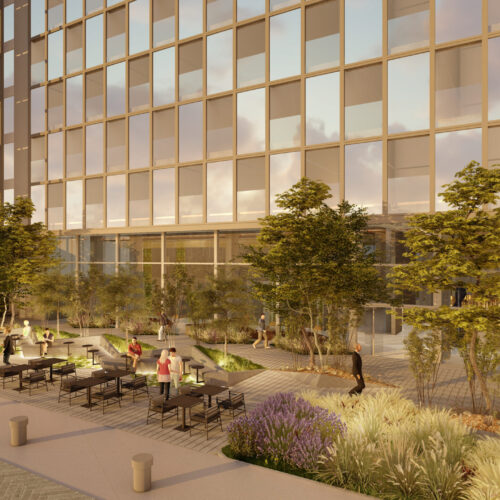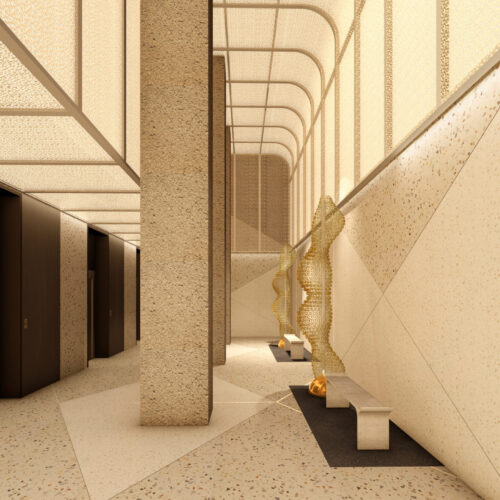Desde la lógica tectónica la estrategia material tiene como objeto vestir parcialmente el edificio existente dejando registro visible del edificio original. El proyecto tiene una impronta industrial donde prevalecen los tonos en arena, grises, ciertos brillos y destellos focalizados en diversas áreas donde destacan cierta sofisticación. La estrategia en la aplicación de los cielorrasos deja ver entre sus intersticios la losa existente y sus instalaciones como parte de un grupo de texturas que comulgan entre lo existente y la intervención contemporánea. Las intervenciones con materiales pétreos aplicados dialogan con las columnas existentes de hormigón cuyo tratamiento rustico de “martelinado” actúan resaltando la existencia de un contenedor con larga historia.
La planta baja está integrada funcionalmente entre el hall y los comercios a través de dos grandes portales de acceso e integrada visualmente entre la plaza del pasaje Carabelas y la acera sobre Carlos Pellegrini a través de un sistema compositivo aplicada al solado y un cielorraso artístico/lumínico transversal al edificio. Incorporamos un espacio de recepción que resuelve ambos accesos.
Teniendo en consideración los usos múltiples del edificio, la propuesta aborda la comunicación y la arquigrafía integrado al diseño holístico de la propuesta. La vegetación nativa (gramíneas, salvias, lavandas y herbáceas) están organizadas dentro del sistema celular compositivo al igual que sus árboles de poca raíz (Aguaribay, Anacahuita, Bahuina, Hacer palmatum, Citricos). El objeto artístico/lumínico suspendido que actúa como cielorraso, también responde a la misma composición / fractal.
Los materiales escogidos además de representar una estética industrial además cumplen con ciertos requerimientos sustentables como es el ejemplo del cielorraso suspendido de fieltro acústico (de componentes 100% reciclables), celulosa proyectada aplicada en losa, el screen planel, chapa geoclad Sw 1520, entre otros.
Entendemos que la propuesta de interiorismo no solo debe cumplir con equilibrios compositivos sino además con una coherencia conceptual donde confluya un criterio de “diseño holístico” que permita comprender la totalidad de un conjunto de elementos.
